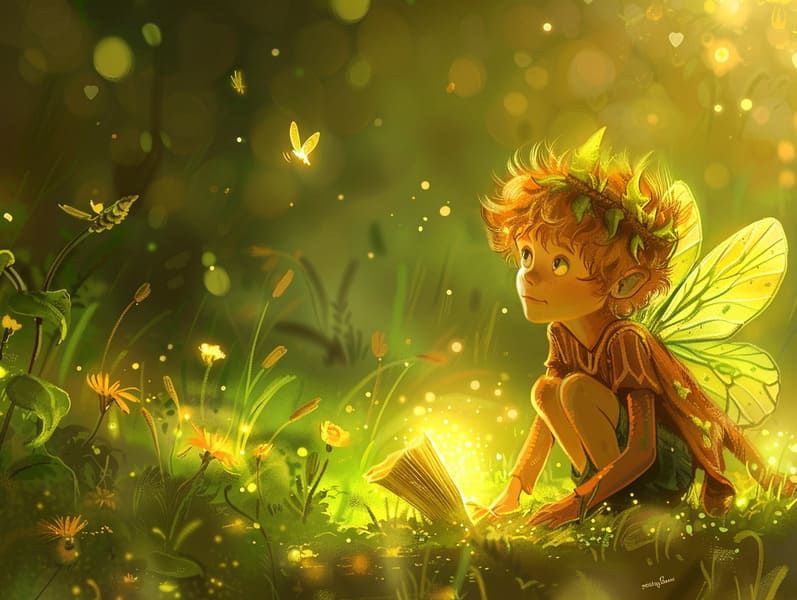
Fairy tales have enduring presence. These stories have been transmitted from one generation to the next millennia before they were ever written down. They originated from a variety of backgrounds, including Asian traditions. They were initially narrated among grown-ups, often carrying themes and messages relevant to the societal norms and beliefs of the time.
The Grimm brothers, Jacob and Wilhelm Grimm, were among the first to compile many of these beloved fairy tales. Their collection, "Grimm's Fairy Tales," included classics like "The Little Glass Slipper," "The Bread Crumb Trail," and "Schneewittchen," which have since become mainstays in the world of famous fairy tales. Similarly, the Danish author's magical stories, such as "The Sea Maid," and "The Duckling that Could," have floated into hearts worldwide, securing their place in the pantheon of iconic fairy tales.
Despite their historical roots, these tales remain as impactful as ever, especially as children's bedtime stories. These fantastical tales are now available in many formats, including richly illustrated books, charming animations, and digital fairy tales.
Their lasting presence can be ascribed to several delightful features:
Important Morals: Timeless fairy tales often provide important moral lessons. Narratives like "The Wolf and the Liar" teach the value of honesty, while "The Tortoise and the Hare" exemplify the traits of determination and meekness. These stories offer kids clear distinctions between right and wrong, building their moral compass in a tender yet significant way.
Compassion and Insight: Fairy tales frequently feature figures facing tests and troubles, prompting young listeners to empathize with their struggles and applaud their triumphs. For instance, "Beauty and the Beast" highlights the value of seeing beyond looks to see the real character of a person, fostering tenderness and insight.
Cultural Perception: Many fairy tales are interwoven with the cultural contexts from which they were born. Reading these tales can provide enlightening views into different societies, advancing a sense of global appreciation and respect.
Inventiveness and Fantasy: The fanciful elements in ancient fairy tales—mythical creatures—encourage children’s fantasy worlds. These fairy tales bring readers to otherworldly realms, invigorating fantasy dreams and a sense of enchantment that stays a lifetime.
Timeless fairy tales are not only magical but also pedagogical. They work as bewitching tools in get more info developing various thinking and feeling skills in young readers. When traditional fairy tales are voiced, they promote verbal skills by teaching new vocabulary and complicated sentence structures. This practice also develops listening abilities and focus, as kids keep up with the story, anxious to see what happens next.
Furthermore, talking about the themes and characters of timeless fairy tales can cultivate evaluative skills and thought processes. Kids are instructed to discern patterns, guess what will happen, and make sense of cause and effect. These conversations also further kids articulate their thoughts and feelings, enhancing their emotional intelligence.
In today’s electronic age, the existence of internet fairy tales has made these stories more accessible than ever. Web platforms and software supply broad selections of famous fairy tales that can be read or listened through anytime, anywhere. Fairy tales read out loud are particularly well-received, supplying an captivating way for children to be a part of these captivating stories. Narrated books and read-aloud videos transport characters and settings to life, often joined by bewitching music and instrumentals that improve the story adventure.
The timeless appeal of ancient fairy tales lies in their ability to transform to present eras while retaining their central values. Contemporary renditions of these stories often include more inclusive characters and modern settings, making them accessible to today’s audience. However, the central morals of heroism, compassion, and righteousness remain unchanged, continuing to appeal to kids of all ages.
Ancient fairy tales also offer a sense of calm and recognition. They bestow a neat narrative with a apparent beginning, middle, and end, often finishing with the culmination of conflicts and the triumph of righteousness over wickedness. This certainty can be placating for children, making known a sense of unwaveringness in an variable world.
Timeless fairy tales continue to charm and inform new generations, maintaining their majesty and relevance in modern society. As children's night stories, they introduce a perfect blend of captivation and insight, sustaining moral values, empathy, and creativity. The existence of digital fairy tales and the likability of fairy tales told out loud certify that these ancient fairy tales remain reachable to new generations.
By conserving and broadcasting these tales, we continue to admire the rich tapestry of cultural legacy and cultural heritage. Whether you are discovering a colorful picture book, delving into a web-based library, or playing an voice book, the grandeur of traditional fairy tales is always within reach. These fairy tales remind us of the enduring magic of tales and its ability to link us across eras and regions.
If you are perusing a beautifully illustrated book, seeing a virtual library, or playing an spoken story, the attraction of ancient fairy tales is always within reach.
These tales illustrate of the unchanging power of fairy tales and its ability to link us across generations and cultures, casting a charm that charms and informs alike.